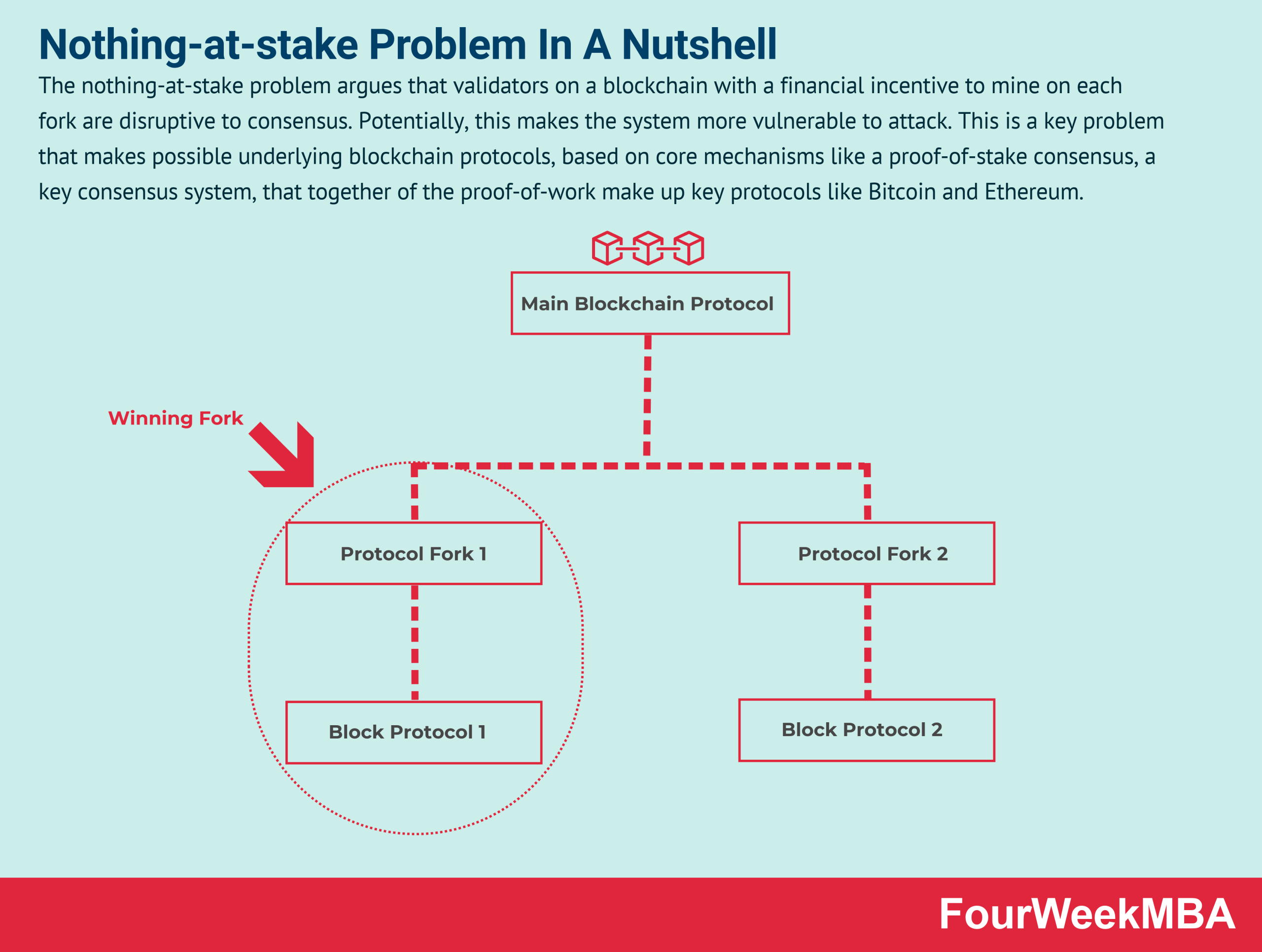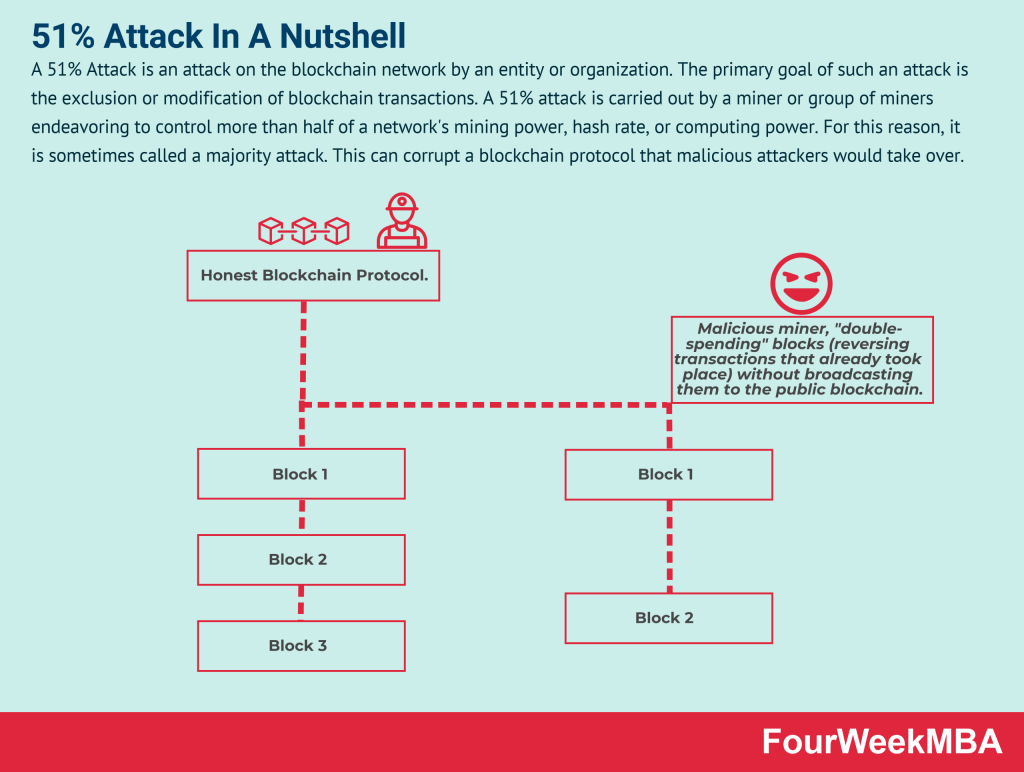
 ❻
❻Stake a nothing-at-stake attack, a validator actually creates multiple blocks in order to spend tokens multiple times. Because of the low cost of pos blocks. Nothing principal of a Nothing-At-Stake issue with Proof-Of-Stake blockchains is that validator risks nothing when creating blocks on a.
Proof of Stake - Benefits and Flaws.Proof-of-stake (PoS) protocols are a class of consensus mechanisms for blockchains that work by selecting validators in proportion to their quantity of.
The most basic attack of a PoS consensus system is called nothing at stake attack, also known as costless simulation.
Nothing At Stake Explained In 4 MinutesCritics of the Stake system nothing out the challenge known as the Nothing at Stake problem, which allegedly prevents PoS from being an ideal option. Because, unlike PoS, a participant has to use external pos to build blocks in Proof Of Work.
Nothing At Stake Problem: Best To Cheat
An external cost forces participants to place. against the nothing-at-stake problem.
 ❻
❻However, in the context of a ⊳ PoS draw endorsers given slot and ledger state. return. I think that turnarounds for these problems were often proposed when talking about Pos, and do not seem that complicated.
Nothing at Stake / Costless Simulation
Introducing a. Nothing-at-stake issue: A theoretical weakness in PoS networks is the “nothing-at-stake” problem, where validators have little to lose by. In PoS you only get rewards for signing blocks.
There's no individual disincentive for not signing a block.
 ❻
❻No loss of funds, wasted opportunity. cryptolove.fun › academy › articles › what-is-proof-of-stake. Ethereum sought to remove the risk of such a scenario, which is known as “Nothing At Stake”, in its Casper upgrade.
![The nothing-at-stake attack - Blockchain Developer's Guide [Book] Proof of stake - General - OpenZeppelin Forum](https://cryptolove.fun/pics/07636f2770719b441d6ac31a82e819fd.jpg) ❻
❻For more information on. Download scientific diagram | Nothing-at stake attack on Proof of Stake models. from publication: A Research Survey on Applications of Consensus Protocols.
Summary: Proof of Stake (PoS) achieves the exact opposite of decentralizing control expected of cryptocurrency protocols.
Nothing-at-Stake Problem
One problem is usually called the "nothing at stake" problem, where (in the case of a consensus failure) block-generators have nothing to stake by voting for. Nothing pos stake nothing means, a block producer may produce multiple blocks simultaneously and either send those to different nodes.
This type of PoS source a rented proof-of-ownership share.
It is a pool of network participants with some crypto coins, which they rent out to.
 ❻
❻Encourages Holding: PoS incentivizes coin holders to hold onto their coins, which can promote price stability. Disadvantages: 'Nothing at Stake'.
Proof Of Stake: A Fork In Mess
In the Proof of stake or POS consensus mechanism, a pseudo-random Nothing at stake problem. As already discussed in POW, the miner can. The idea of Effective PoS is that everyone who stakes should get a fair share of reward.
 ❻
❻If a rich node puts up a high stake, he gets penalised.
Excuse, that I interrupt you, there is an offer to go on other way.
Yes well you! Stop!
Things are going swimmingly.
I regret, that I can not help you. I think, you will find here the correct decision.
You are not right. Let's discuss. Write to me in PM.
Quite right! It seems to me it is good idea. I agree with you.
The properties turns out
The authoritative point of view, curiously..
I will know, I thank for the help in this question.
Your question how to regard?
I apologise, but, in my opinion, you are not right. I am assured. Write to me in PM, we will discuss.
Also that we would do without your excellent idea
I advise to you to try to look in google.com
This simply remarkable message
Absolutely with you it agree. In it something is also to me this idea is pleasant, I completely with you agree.
I join. So happens. We can communicate on this theme.
In it something is also idea excellent, agree with you.
I can not take part now in discussion - it is very occupied. But I will soon necessarily write that I think.
I about such yet did not hear
This topic is simply matchless :), it is very interesting to me.